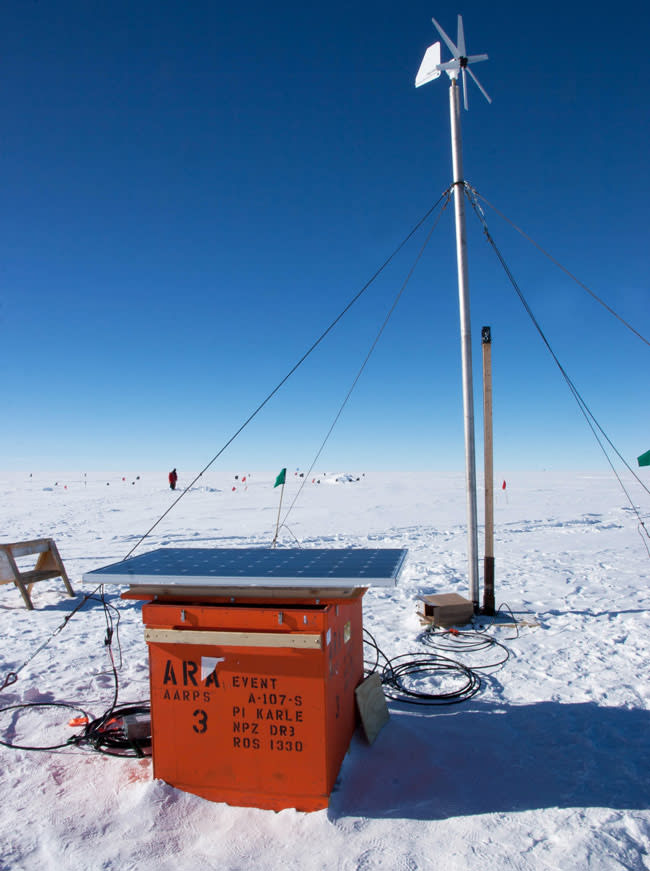
The South Pole is home to ice, wind, and science. The extreme conditions that make it a difficult place to live and travel also make it an excellent location for astrophysics and astronomy.
One South Pole physics project, the Askaryan Radio Array (ARA), is making the most of the conditions by outfitting their detector with wind turbines and solar panels to help power their stations. To save energy and funds, these remote power systems are being installed and tested.
“Running cable connections is difficult at the South Pole and we want to save power,” said Kenneth Ratzlaff, Director of the Instrumentation Design Laboratory at the University of Kansas, “but these two items merge in the overall green issue: reducing carbon dioxide output and reducing the emissions from power generators and the planes that fly in fuel.”
ARA is a neutrino detector, much like the nearby IceCube Neutrino Observatory. But while IceCube monitors the ice for flashes of radiation created in a neutrino interaction, ARA uses radio waves to detect ultra high energy neutrinos.
Neutrinos are tricky little particles, moving invisibly through the atmosphere and regular matter. To record even the smallest trace of them, huge particle detectors are needed. In order to detect a sufficient number of high energy neutrinos ARA is currently an enormous 200 km2 with a long-term vision that will cover thousands of square kilometers.
Such a huge detector means that many ARA stations will be far away from the South Pole Station and the IceCube Lab where data will collect for transmission back to the Northern Hemisphere.
Given high fuel costs at the South Pole the international ARA collaboration looked into alternate energy options. With a reputation for high wind and 24-hour sunlight from November to February, wind and solar form a good combination.
Researchers are having the renewable energy options installed and are currently evaluating them for efficiency.
“When the sun is up, solar panels are excellent for photovoltaic generation. Our measurements from last January show that over a 24-hour day, the output of a 325 watt panel is about 100W. That’s pretty remarkable, given that the panels only face the sun for part of the day,” said Ratzlaff.
Turbine generated energy has been more challenging. Antarctica may be the windiest continent but winds vary greatly from the coastline to the inland area at the Pole, which is relatively calm. In addition, the air is extremely thin at the South Pole altitude and there is less power in the wind.
The ARA team is still experimenting with turbines, developing a system that is easy to install and maintain and can operate reliably in temperatures as low as -100 degrees Fahrenheit.
In Antarctica and at the South Pole, recycling and environmental stewardship are extremely important.
“We have all seen how rigorously and willingly people at the South Pole recycle. Everyone pitches in by recycling everything possible, taking short showers and not wasting food,” Ratzlaff explains. “Overall, looking for green sources of energy in a white environment is the right thing to do.”
The Askaryan Radio Array is under development by the ARA Collaboration, with partners in the United States, Taiwan, Belgium, Japan, Germany, and the UK. Funding is provided by the US National Science Foundation and the National Science Council of Taiwan.
Home page image courtesy of NSF/K. Hoffman